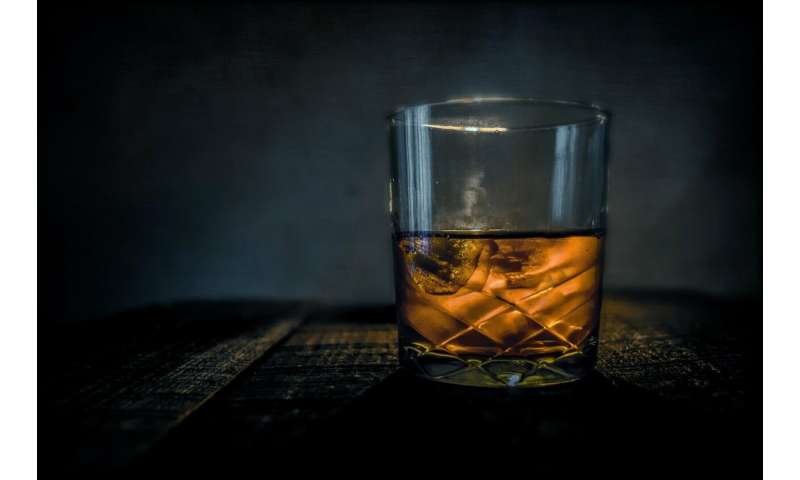
Researchers from the University of St Andrews have developed an innovative new technique using lasers to accurately measure the authenticity of some of the world's most exclusive whiskies—without ever removing the cap.
Iconic bottles of whisky have been known to sell for prices over £1 million. But if you are the lucky owner of such a whisky, how can you be confident that the contents of the bottle are the genuine product? Counterfeit drinks cost the UK economy more than £200 million in lost revenue each year, according to a 2018 study published by the European Union's Intellectual Property Office.
New research led by scientists from the School of Physics and Astronomy, published in the journal Analytical Methods, has led to the development of a method using lasers which can see through the bottle to analyze the contents. The challenge in doing so was to record a signal from the contents without recording signals from the glass.
The team used the method of laser spectroscopy, a process which shines laser light into a substance of interest and the sample scatters the light into different colors. The precise colors of the scattered light depend on the chemical make-up of the substance and can therefore be used to identify materials ranging from bacteria, food and drink, through to the paint on sculptures and explosive powders.
The researchers at St Andrews demonstrated a decade ago that laser spectroscopy could be used to identify counterfeit whisky. However, their previous method was hampered by the fact that the alcohol is not the only material to scatter light: the glass of the bottle can create an even bigger signal which dwarfs the signal produced by the contents. Therefore, previous setups required the removal of a small quantity of the liquid for testing.
The group of postdoctoral researchers, Holly Fleming, Mingzhou Chen and Graham Bruce, led by Professor Kishan Dholakia, developed a new method to accurately measure the contents of a bottle. Rather than illuminating the bottle with a standard laser beam, the team used a glass element to shape the light to produce a ring of laser light on the bottle surface and a tightly focussed spot within the liquid contents. As the signal from the bottle and the signal from the liquid are at different positions, a detector can be placed to record only the signal from the liquid, meaning the bottle contents can be assessed without ever opening the bottle.
Professor Kishan Dholakia said: "Personally, I hate it when I have to spare a drop of whisky for validation checks. I'd much rather drink the whole bottle. Laser spectroscopy is a powerful tool for characterizing the chemical make-up of many materials, but to use it to characterize alcohol in its original container in this simple way is really exciting."
The approach does not require complex optical setups and therefore promises to be easily manufactured for widespread use. If whisky isn't to your taste, the researchers have also demonstrated the method using vodka and gin. Meaning that in future, it will be possible to authenticate expensive alcohol without wasting a drop.
The method has been published in the journal Analytical Methods.
Explore further
Citation: Verifying whisky using laser light (2020, September 9) retrieved 9 September 2020 from https://ift.tt/33bsIVh
This document is subject to copyright. Apart from any fair dealing for the purpose of private study or research, no part may be reproduced without the written permission. The content is provided for information purposes only.
"light" - Google News
September 09, 2020 at 06:40PM
https://ift.tt/33bsIVh
Verifying whisky using laser light - Phys.org
"light" - Google News
https://ift.tt/2Wm8QLw
https://ift.tt/2Stbv5k
Bagikan Berita Ini















0 Response to "Verifying whisky using laser light - Phys.org"
Post a Comment